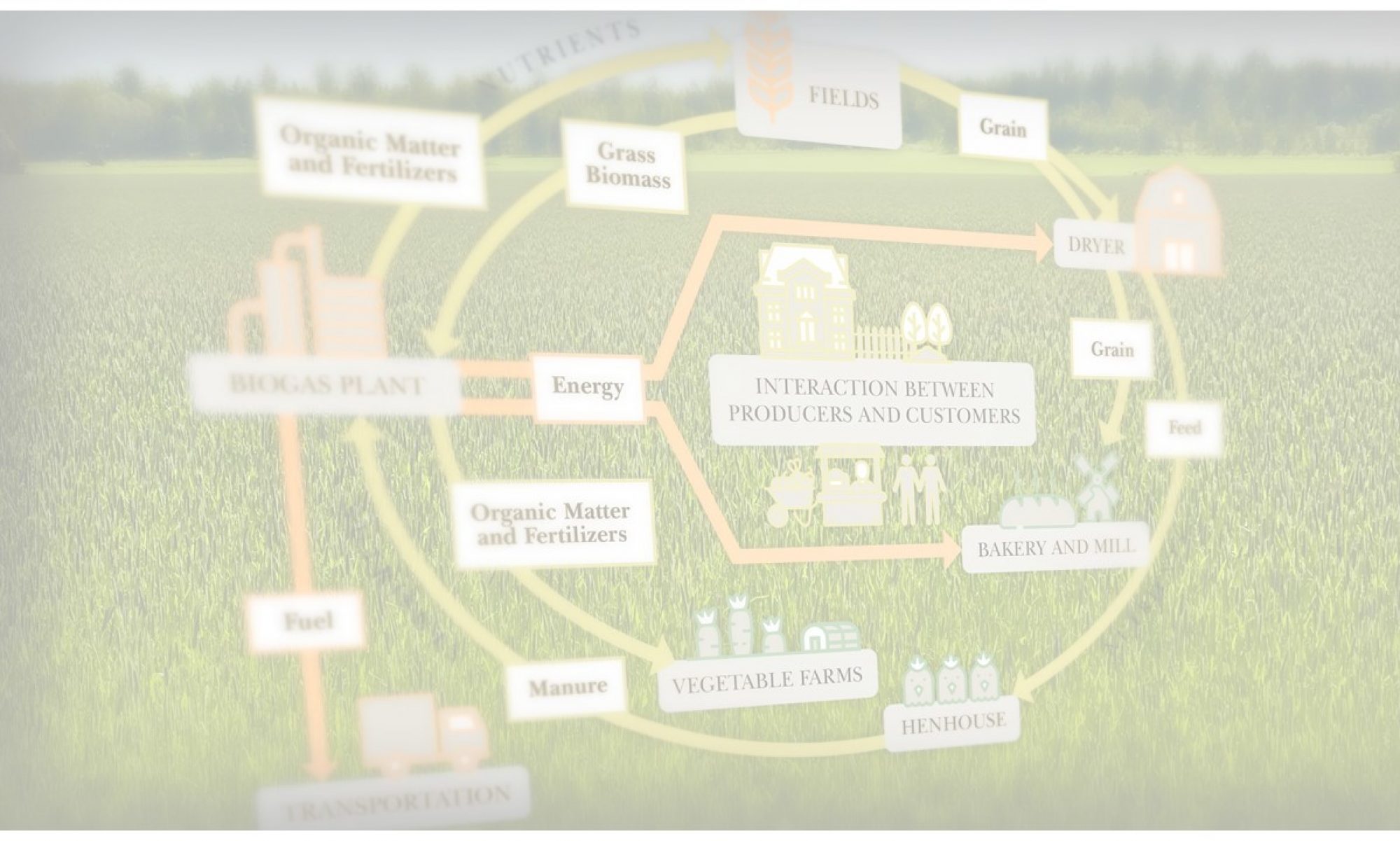“Agroecological symbiosis (AES)is a form of food production and processing in which the farms, the food processors, and the energy producers function in an integrated manner. The operations are running in spatial proximity to each other allowing efficient material and energy integration. In an AES, nitrogen as plant nutrient for the primary production is biologically fixed. The main source of energy is renewable, generated from the biomasses produced within the AES in a biorefinery, such as a biogas plant, belonging to the AES. In case of a biogas plant, the biorefinery has the dual purpose of providing the energy, and in the form of the digestate, producing the organic fertilizer and soil-conditioner for recycling plant nutrients back to the farmland. An AES sells agricultural or horticultural products, food products, and if produced in excess, bioenergy. The volume of the production, and the reach to the surrounding farmland within the AES are limited by the biophysical potential of the specific agroecosystems without compromising the other ecosystem services. The spatial extent of the biophysical operations is limited to sustainable logistic efficiency for the transport of the feedstock and the recycling fertilizers. The AES strengthens the local socio-economic connections and diversifies the regional food culture.”

Model for sustainable food systems